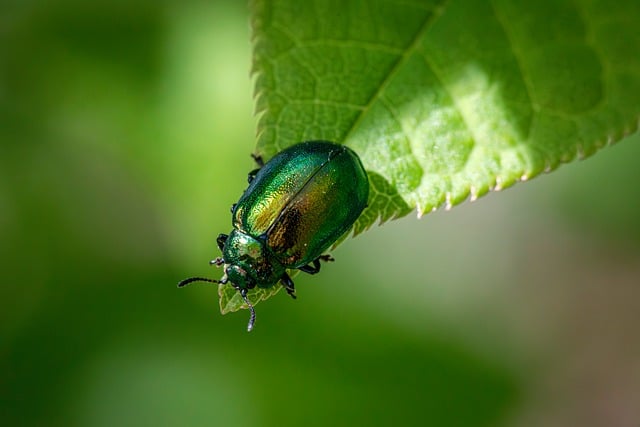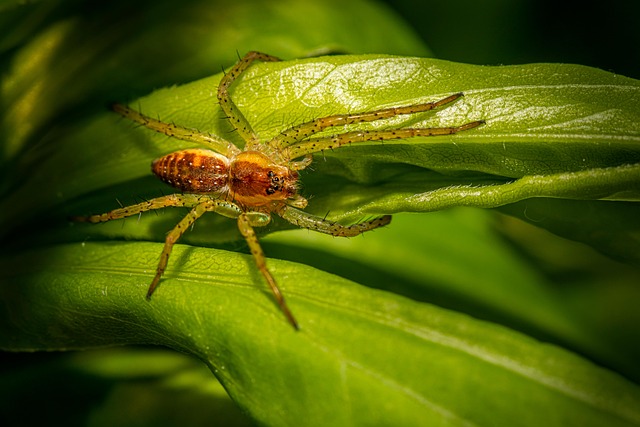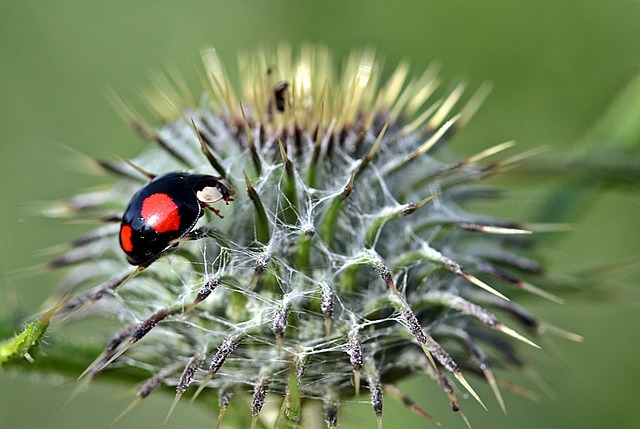In Highlands Ranch, Colorado, flea and tick infestations pose significant risks to cattle health during warmer months, emphasizing the importance of regular monitoring and early detection. Targeted, cost-effective treatments based on specific parasite types minimize impact on both cattle welfare and the environment. Effective strategies include organic methods like grazing rotation, natural predators, and permethrin insecticides for targeted areas; long-term solutions like Integrated Pest Management (IPM) promote ecosystem balance while reducing toxic chemical use.
In the lush landscapes of Highlands Ranch, cattle pastures are susceptible to flea and tick infestations. These external parasites not only cause discomfort to livestock but can also lead to significant health issues and economic losses. Understanding these pests’ lifecycle and behavior is crucial for implementing effective strategies. This article offers a comprehensive guide to cost-effective solutions for preventing and managing flea and tick problems in cattle pastures, focusing on long-term, sustainable practices tailored for the Highlands Ranch environment.
- Understanding Flea and Tick Infestations in Cattle Pastures
- Cost-Effective Solutions for Preventing and Managing Pests
- Implementing Long-Term Strategies for Effective Pest Control
Understanding Flea and Tick Infestations in Cattle Pastures

Flea and tick infestations can significantly impact the health and well-being of cattle in Highlands Ranch, Colorado, particularly during warmer months. These external parasites are not only a nuisance but also pose serious risks to livestock, leading to poor animal performance, reduced productivity, and potential transmission of diseases. Understanding their life cycles and behavior is crucial for implementing effective cost-effective pest control strategies in cattle pastures.
Regular monitoring and early detection play a vital role in managing flea and tick populations. Pasture owners should inspect their herds regularly for signs of infestation, such as itching, scratching, or loss of coat condition. By identifying issues promptly, farmers can employ targeted, cost-effective treatments tailored to specific parasite types and minimize the impact on cattle health and the environment.
Cost-Effective Solutions for Preventing and Managing Pests

In Highlands Ranch, cost-effective pest control for cattle pastures involves a multi-faceted approach leveraging natural and organic methods alongside strategic applications of traditional treatments. One effective strategy is maintaining a healthy pasture through proper grazing management. Rotating livestock among different areas can disrupt pest breeding cycles, as fleas and ticks prefer densely packed, undisturbed vegetation. Regular deworming programs for livestock also play a crucial role in managing external parasites, reducing the need for chemical interventions.
Additionally, employing physical barriers like fences with fine mesh can prevent flea and tick infestation by blocking their access to cattle. Using natural predators such as birds of prey, spiders, and certain insects can also help keep these pests under control. For areas with recurring issues, targeted applications of permethrin or pyrethroid insecticides can be effective, ensuring the well-being of both livestock and the environment while maintaining cost-effectiveness for Highland Ranch cattle farmers.
Implementing Long-Term Strategies for Effective Pest Control

In the quest for effective and sustainable pest control, especially for cattle pastures in Highlands Ranch, long-term strategies are key to achieving success. These strategies go beyond immediate solutions, focusing on integrated pest management (IPM) practices that involve a combination of biological, cultural, and chemical methods. By implementing IPM, farmers can minimize the reliance on toxic chemicals, ensuring both the health of their livestock and the environment.
One cost-effective approach is to encourage natural predators such as birds, bats, and beneficial insects that feed on fleas and ticks. Additionally, maintaining proper pasture management practices, including regular mowing and rotational grazing, disrupts pest life cycles. These methods not only provide effective flea and tick defense but also contribute to a balanced ecosystem within the Highlands Ranch cattle pastures.
In the pursuit of healthy and thriving cattle pastures in Highlands Ranch, implementing robust flea and tick defense strategies is paramount. By understanding these infestations and adopting both immediate and long-term solutions, farmers can effectively manage these pests. Cost-effective methods, from regular cleaning to strategic applications of natural repellents, offer sustainable protection. Combining these practices with comprehensive planning ensures a thriving environment for cattle, showcasing an integrated approach to cost-effective pest control for Highlands Ranch cattle pastures.
